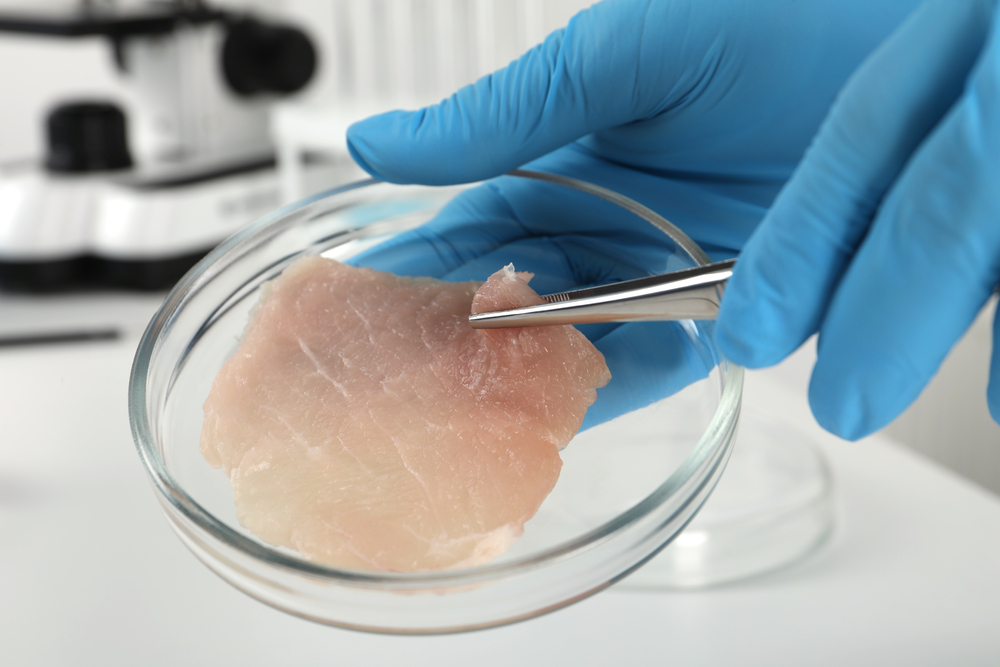Part of the Food Policy Snapshot Series
Policy name: China’s Five-Year Agricultural Plan (2021-2025)
Overview: China has released its Five-Year Agricultural Plan, which includes cultivated meats and plant-based meat alternatives for the first time.
Location: China
Population: 1.4 billion
Food policy category: Food production, food security
Program goals: To use technology as a means of increasing food security and ensuring a sustainable food supply.
How it works: China’s 14th Five-Year Agricultural Plan, released by the Chinese Ministry of Agriculture and Rural Affairs, serves as a blueprint for the future of China’s food supply and a plan for agricultural and rural modernization. For the first time ever, the plan includes “cultivated” (i.e., lab-grown) meat, as well as plant-based egg and meat alternatives, as a way to increase food security and sustainable agriculture.
Cultivated meat is animal meat that is produced using animal stem cells and so does not require raising and farming livestock. Stem cells are grown at high volumes and fed an oxygen-rich cell culture medium that includes key nutrients such as amino acids, vitamins, and glucose. The cells differentiate into the skeletal muscles, connective tissue, and fat that make up meat products. The entire process takes between two and eight weeks.
Eat Just, a California startup, has produced a mung bean-based JUST Egg that is being used by many restaurants and street vendors across China.
Because the Chinese government has prioritized these “future foods,” it is expected that they will invest significant funding in the technologies that support their production.
Progress to date: The plan was announced to the press on December 8, 2021, and officially released in late January, 2022.
Why it is important: The World Food Programme states that 150.8 million Chinese residents, approximately 11 percent of the population, are malnourished. With a population of nearly 1.4 billion, it is a challenge for China to produce enough food. The Chinese consume more than 28 percent of the world’s meat supply, and consumption continues to increase.
The production of animal-based foods and livestock feed contributes 57 percent of greenhouse gas emissions, which are primarily responsible for global warming, and China is responsible for more than 27 percent of the world’s total greenhouse gas emissions, more than all developed countries combined.
A reduction in the traditional production and consumption of animal-based foods, along with an increase in cultivated meats and plant-based alternatives, may help improve food security and sustainability while also reducing greenhouse gas emissions.
Program/Policy initiated: The plan was released in December, 2021, and covers the five-year period from 2021-2025.
Point of contact: N/A
Similar practices: China’s national government-driven focus on cultivated meat and plant-based alternatives is the first of its kind.
Evaluation: Evaluation has not yet been conducted.
Learn more:
- China’s Focus on Food Security (The Diplomat)
- Considerations for the Development of Cost-Effective Cell Culture Media for Cultivated Meat Production (Comprehensive Reviews in Food Science and Food Safety)
- Food Security and Food Self-Sufficiency in China: From Past to 2050 (Food and Energy Security)
- How China Plans to Lead the World in Sustainable Food with Latest Five-Year Agricultural Development Plan (South China Morning Post)
- Look Closer: China is Quietly Making Moves on Cultivated Meat (Good Food Institute)
References:
- 5-Year Plan Spotlights Green Development (The State Council – The People’s Republic of China)
- Causes of Climate Change (United States Environmental Protection Agency)
- China (World Food Programme)
- China’s 5-Year Agricultural Plan To Include Cultivated Meat and ‘Future Foods’ For The First Time (Green Queen)
- China’s 5-Year Plan Includes Plant-Based Eggs, Cultivated Meat. Here’s Why That’s a Big Deal. (VegNews)
- China’s Appetite for Meat Fades as Vegan Revolution Takes Hold (The Guardian)
- China’s Five-Year Agricultural Plan Includes Cultivated Meat for the First Time Ever (VegEconomist)
- China’s Greenhouse Gas Emissions Exceeded the Developed World for the First Time in 2019 (Rhodium Group)
- China’s New 5-Year Plan is a Blueprint for the Future of Meat (Time)
- China Strives to Make Food System Greener, More Sustainable (Ministry of Agriculture and Rural Affairs of the People’s Republic of China)
- China Unveils 5-year Plan to Advance Agricultural, Rural Modernization (China.org)
- Global Greenhouse Gas Emissions From Animal-Based Foods are Twice Those of Plant-Based Foods (Nature Food)
- How China Could Change the World by Taking Meat Off the Menu (Time)
- The Science of Cultivated Meat (Good Food Institute)
- What is China’s Five-Year Agricultural Plan and Will it be Meat-Free? (EuroNews)


